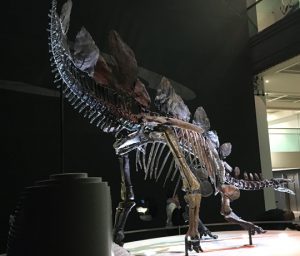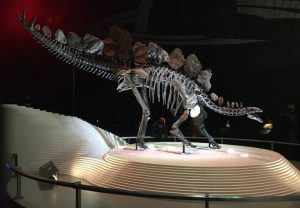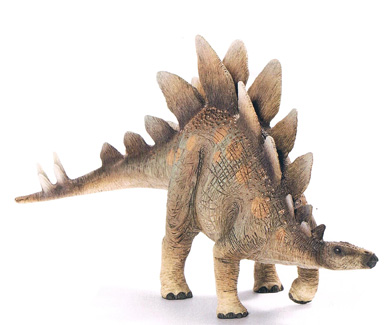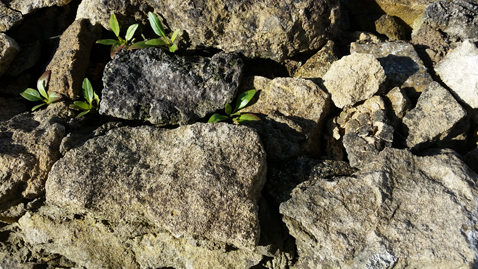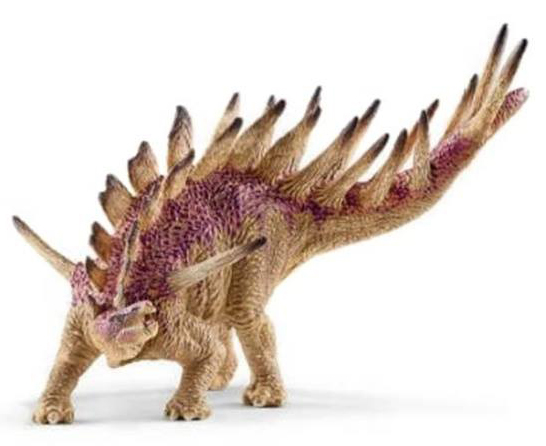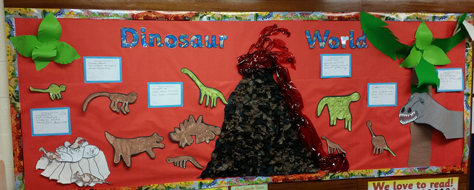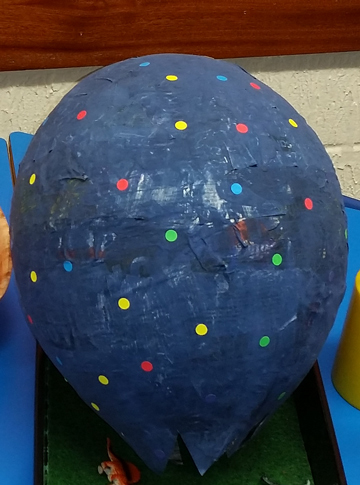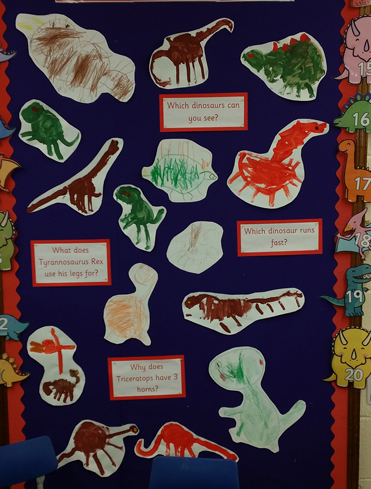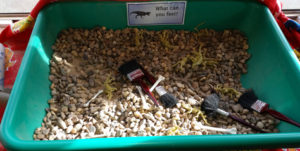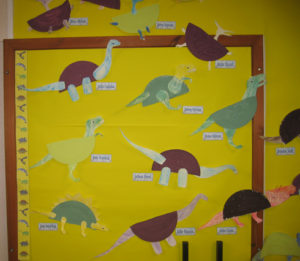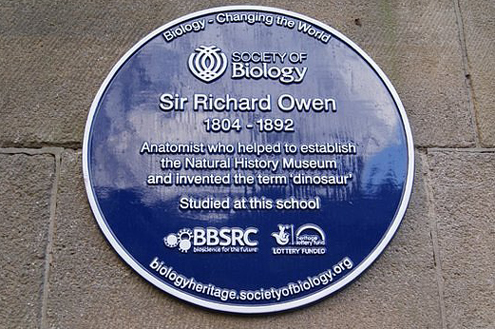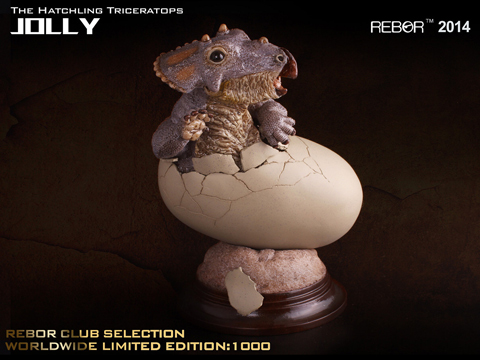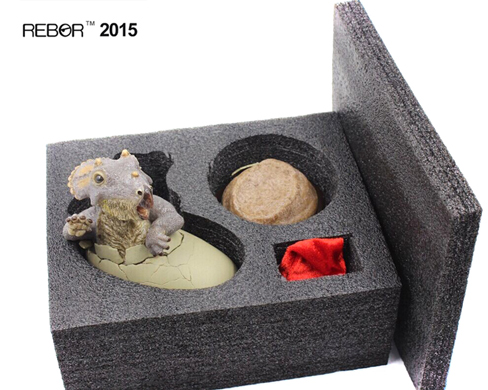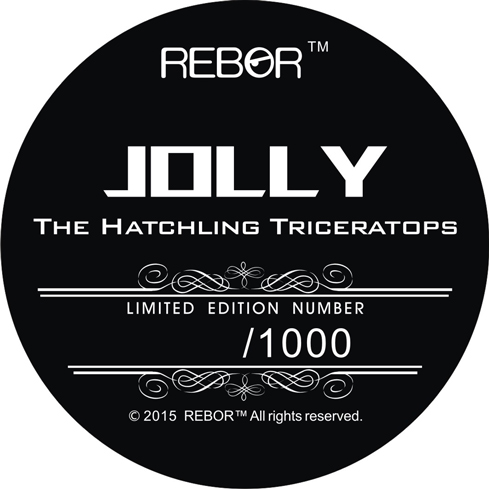The Dilophosaurus Dinosaur and Jurassic Park (Jurassic World)
It’s 104 days and counting until the world premier of the new film in the “Jurassic Park” franchise “Jurassic World” and we can’t wait. Just for a bit of fun as we countdown to the June 12th premier, our dinosaur experts are commenting on the various prehistoric animals that have featured in previous movies during this dinosaur themed franchise and just might get a look in when it comes to the nasty protagonists in the fourth instalment “Jurassic World”.
Dilophosaurus
Second in this occasional series, one of the most controversial dinosaur portrayals in cinema history, a “spitter” otherwise known as Dilophosaurus. The theropod dinosaur known as Dilophosaurus may be familiar to movie goers because of its appearance in the first Jurassic Park film (1993), but sadly, this dinosaur was not portrayed very accurately. A number of species have been named and fossils ascribed to this genus have been found in the western United States and China. With one species, Dilophosaurus wetherilli, fossils of which come from Arizona, estimated to have measured in excess of six metres, this dinosaur was one of the largest predators around in the Early Jurassic.
However, in the film a much smaller dinosaur was depicted, the movie version was only about three metres long. The size of the dinosaur has been explained by a number of commentators who have suggested that the Dilophosaurus featured in the first of the franchise was merely a baby.
The Dilophosaurus from the Film (Jurassic Park) 1993
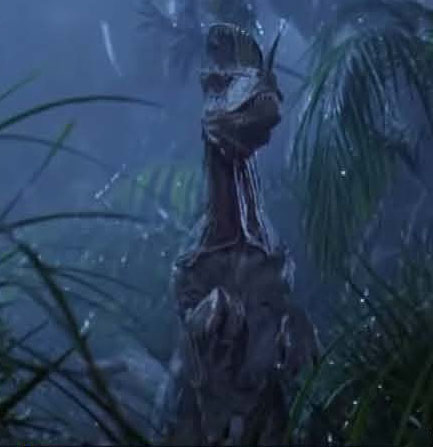
A relatively small animal was depicted.
Picture credit: Universal Pictures
The Dinosaurs of “Jurassic World”
This meat-eating dinosaur was responsible for the death of one of the villains of the film, when Dennis Nedry, (played by Wayne Knight), the computer programmer responsible for cutting the power to the Park was attacked and eaten. The “Jurassic Park” Dilophosaurus (see picture above), did have those famous thin, double crests running across the top of its snout. Dilophosaurus means “double crested lizard”, quite what purpose those crests served remains unknown. Indeed, the crests have never been found attached to the skull, it is not certain that the bony crests were on the head, although the restoration in which the crests run parallel to each other along the snout does seem to be the most convincing.
The Jurassic Park Dilophosaurus had a neck frill and a very bright and colourful one at that. This neck frill only became obvious immediately prior to the dinosaur attacking. There is no fossil evidence to suggest that Dilophosaurus, or indeed any theropod dinosaur had such a feature, but as most palaeontologists believe that the Dinosauria all had excellent colour vision, the film makers can at least be assured that the flashy red and yellow markings would have been noticed should “Jurassic Park” have made its debut sometime in the Mesozoic.
ITOY Studio Dilophosaurus
ITOY Studio have developed a beautiful model of a Dilophosaurus as portrayed in the film: ITOY Studio dinosaurs.
In the Film Dilophosaurus Had a Brightly Coloured Neck Frill
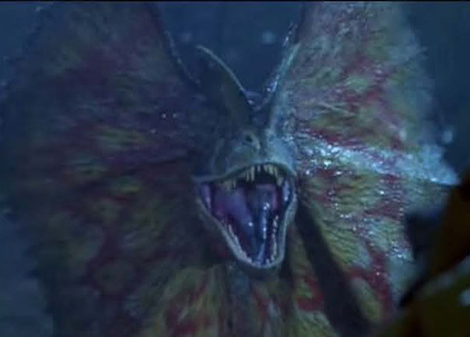
As depicted in “Jurassic Park” with a neck frill.
Picture credit: Universal Pictures
The “Spitters” in Jurassic Park
The name “spitter” is a reference to another rather misleading feature of the Dilophosaurus from the film. In order to overpower its victim, this dinosaur spat venom into the eyes of its potential prey. Poor Dennis Nerdy, he did not see his end coming as he had been temporarily blended by the spitting dilophosaur.
Once again, there is no fossil evidence to support the idea that this dinosaur was venomous. Dinosaurs that had venom are a figment of Michael Crichton’s imagination, the author of the original book. Or are they? Certainly, there is no evidence to suggest that a coelophysid such as Dilophosaurus was the dinosaur equivalent of a spitting cobra, but back in December 2009, Everything Dinosaur team members wrote an article about one of the theories associated with Sinornithosaurus from the Early Cretaceous of China.
A Light, Thin Skull
The light, thin skull of this small dinosaur did not seem very well suited to tackling struggling prey. Then it was noticed that some of the larger teeth in the upper jaw and strange grooves running down them. Could these teeth have evolved into fangs, linked to a venom sack, so that when Sinornithosaurus bit into a potential meal, poison ran down the tooth groves into the poor, soon to be poisoned victim?
To read more about the research into this Chinese dinosaur: Evidence for a Venomous Dinosaur?
The problem with venom glands is that being made of soft tissue, it is highly unlikely that these organs would survive the fossilisation process. Given the very poor preservation of majority of the Dilophosaurus material from the United States, it can be stated with a degree of confidence that a venomous Dilophosaurus cannot be ruled out, however, it cannot be ruled in either.
A number of Dilophosaurus dinosaur models have been produced. CollectA made a not-to-scale replica, one of their early models in the highly successful “Prehistoric Life” model series. More recently, Safari Ltd introduced a Dilophosaurus into the “Wild Safari Dinos” model range.
To view the Safari Ltd range of prehistoric animal models available from Everything Dinosaur: Safari Ltd. Wild Safari Prehistoric World.
The Wild Safari Dinos Dilophosaurus Dinosaur Model
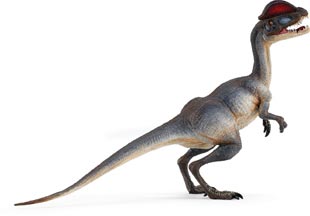
Dilophosaurus dinosaur model.
An Agile, Cursorial Dinosaur
The model depicts an agile, cursorial dinosaur with, of course very colourful head crests. Papo, the French model manufacturer chose to make their Dilophosaurus more robust, giving the impression of a powerful hunter.
The Papo Dilophosaurus Dinosaur Model
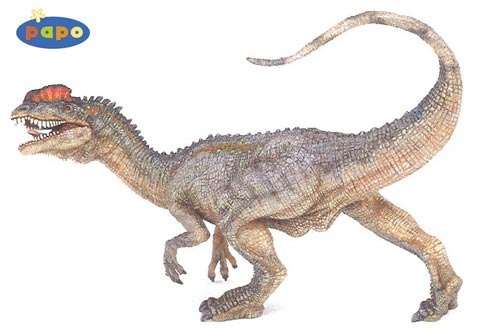
Fossils found 60 years ago helped to describe Dilophosaurus.
It seems that just like in the movies, model making companies can come up with different interpretations when it comes to known fossil material.
Will Dilophosaurus Feature in Jurassic World?
Will there be Dilophosaurus in Jurassic World? Who knows? However, on the island where the film is set, (Isla Nublar), the northernmost area is a “no go zone” for park visitors. It is segregated from the theme park. Perhaps this is the area of the island where some dinosaurs are allowed to roam free and perhaps, just perhaps, this is the part of the island in which the dilophosaurs from the first movie were allowed to grow up.
We shall have to wait and see…
